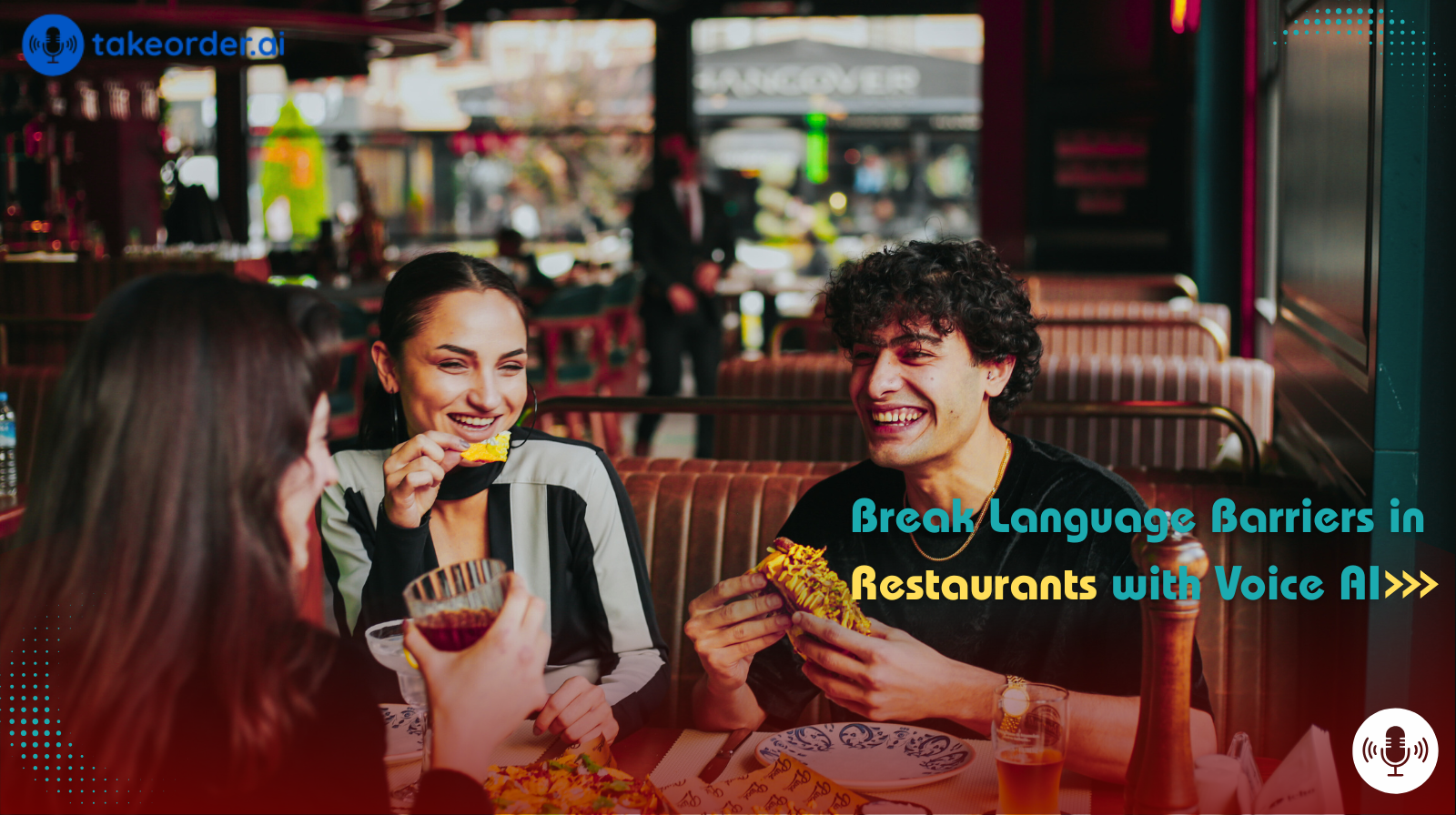
Bringing Inclusive, Human-Like Conversations to Restaurant AI
As the hospitality industry embraces automation, one challenge continues to frustrate both restaurant operators and guests alike: language accessibility. Restaurants cater to highly diverse communities, particularly in global cities, tourist hubs, and international cruise lines. Yet most voice-based technologies still struggle with multilingual interactions, making non-English-speaking customers feel left out and leading to mistakes, delays, or even lost revenue.
This blog explores the common problems that arise when AI fails to communicate effectively in multiple languages and how Takeorder AI solves them by offering advanced, natural, multilingual voice support across all service channels.
Common Challenges in Multilingual Restaurant Environments
1. Incorrect Orders Due to Misunderstood Speech
One of the most frequent problems with standard voice-based ordering systems is the misinterpretation of speech due to accents, unfamiliar terms, or non-English vocabulary. AI can easily confuse similar-sounding menu items or fail to recognize special requests made in regional dialects.
Typical issues include:
Impact:
These misunderstandings lead to incorrect orders, wasted ingredients, customer dissatisfaction, and staff intervention to fix errors, undermining the purpose of automation entirely.
2. Frustration for Non-English-Speaking Guests
When voice AI or kiosks only support English, guests who speak other languages may avoid using these systems altogether. They struggle to understand instructions, cannot clarify questions, and may feel alienated by an experience that should be intuitive.
What non-English speakers often face:
Impact:
This results in reduced customer engagement, limited use of automation tools, poor reviews, and a damaged brand reputation among local or international guests.
3. Limited Menu Accessibility
Language barriers extend beyond ordering; they also affect how menus are presented and understood. Many AI systems fail to provide translated or culturally contextualized menu descriptions, which limits the guest’s ability to make informed choices.
Menu-related language challenges include:
Impact:
When guests are unsure what a dish includes, they may avoid ordering entirely or risk choosing something unsuitable. This not only reduces revenue but also increases the likelihood of customer dissatisfaction or even allergic reactions.
4. Ineffective Customer Support
AI-driven systems are expected to handle more than just ordering; they're often used for reservations, handling special requests, or responding to inquiries. However, when these tools lack multilingual functionality, communication quickly breaks down.
Areas where language gaps show up in support:
Impact:
Guests may experience missed bookings, delays in service, and frustration when they can't get timely support, especially during peak hours or busy weekends.
5. Training Data Bias in Restaurant AI
Many AI systems are trained predominantly on English or European-centric datasets. This creates limitations when serving guests who speak dialects, use blended languages, or come from regions underrepresented in the training models.
Examples of data bias issues:
Impact:
These limitations cause breakdowns in service during high-stakes moments, like busy dinner rushes, resulting in errors, delays, and a poor guest experience.
6. Loss of Brand Experience in Multilingual Settings
Hospitality is about more than efficiency; it's about making every guest feel valued and welcome. When your voice AI cannot communicate in a guest's preferred language, you risk losing that personal, warm brand experience.
Missed opportunities in brand engagement include:
Impact:
Customers feel like they're speaking to a robot rather than receiving hospitality, which undermines brand loyalty and leads to negative perception, especially in competitive or tourism-heavy markets.
7. Employee Dependence and Bottlenecks
When AI doesn’t meet the linguistic needs of your guests, staff are forced to step in. This creates inefficiencies and undermines the very goal of automation: streamlining operations and improving consistency.
Operational problems caused by AI language gaps:
Impact:
The burden shifts back to your team, creating bottlenecks, lowering morale, and eroding the efficiency gains that automation should provide.
Takeorder AI: The Multilingual Solution Restaurants Need

Unlike generic voice solutions, Takeorder AI is designed to speak, understand, and interact with your guests in the languages they are most comfortable with, across all service touchpoints. Whether it’s taking an order, confirming a reservation, or upselling a dessert special, Takeorder AI does it with cultural fluency and natural language processing.
Advanced Multilingual Recognition and Response
Takeorder AI supports a wide range of languages, including Spanish, Hindi, Mandarin, Tamil, Arabic, and many others, along with regional accents and dialects.
Key language features:
Fully Integrated Across All Restaurant Interfaces
Takeorder AI brings multilingual support to every channel where guests interact:
Cultural Context and Localization
Translation is not enough. Takeorder AI is designed for localization, delivering explanations and interactions that respect cultural context.
Localization advantages include:
Enhancing the Guest Experience at Every Touchpoint
Multilingual support isn’t just a technical feature; it’s a powerful brand differentiator. With Takeorder AI, every guest feels understood, respected, and welcomed.
Customer experience improvements:
The Results: Greater Efficiency, Happier Guests
Restaurants that use Takeorder AI’s multilingual features report noticeable gains across all metrics:
In multicultural regions or tourist-heavy areas, these results can translate directly into stronger brand loyalty, better reviews, and improved operational performance.
Seamless Integration with Your Ecosystem
Takeorder AI fits directly into your existing tech stack. From POS systems to reservations, it works in the background, intelligently and efficiently.
Integration highlights:
Serve Every Guest Like a Regular, No Matter the Language
The future of hospitality belongs to businesses that can connect with every customer, not just in words, but in meaning. With Takeorder AI’s multilingual voice assistant, you deliver faster service, more accurate orders, and a personalized touch that transcends language.
Ready to break the language barrier and elevate every guest’s experience?
Book a demo to see how multilingual Voice Takeorder AI can work for your restaurant.
Stay updated on our news and events! Sign up to receive our newsletter.
Thank you for signing up!
Something went wrong. Please try again later.